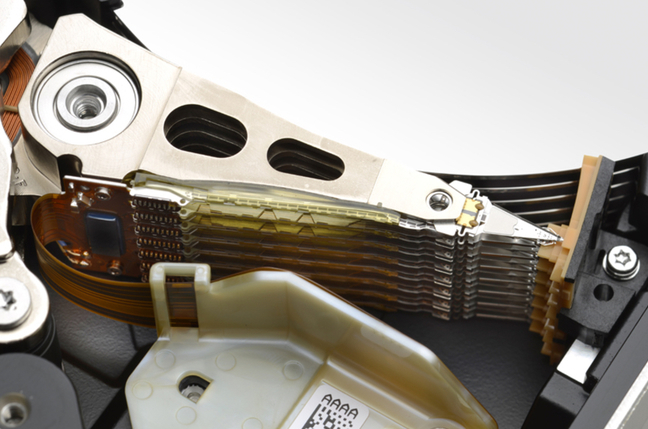Why drives need to breathe (in most cases)

Translator's note: The material presented below contains a certain number of technical terms, the translation of which can lead to inaccuracies. If you notice a typo, mistake or inaccuracy of the translation - write to us and we will fix everything promptly.
Perhaps when reading the specifications of various discs, you encountered phrases like “working height from -1000 to +10 000 feet” (-305 - 3048 meters). All disk drives (with one exception) require air to operate. And the air pressure inside the disk depends on the height at which the device or data center is located , where the drive is used.
')
Why
The need for air is incorporated in the design of the disks. The read / write heads should “float in the air”, while the magnetic disks themselves rotate very quickly (120 times per second in 7200RPM drives). The surface of the discs is made very smooth in order to facilitate the stabilization of the heads.
These fluttering read / write heads are very thin. Imagine a Boeing 747, flying a couple of centimeters above the ground at a speed of 960 km / h - this is what makes the head every day throughout the life of the disk.
In such a situation, the properties of the air separating the surface and the "flying" head are very important - among them density, temperature and humidity, but we will ignore the last property today. At sea level, the average air density is almost 15 pounds per square inch ( PSI ), but at a height of 3 kilometers it falls by almost a third.
When designing each disc, the developers lay a certain range of heights at which the device will work correctly, but exceeding these norms significantly increases the probability of breakage of the read / write heads.
Such failures occur when, due to vibration, the head touches the surface of the disk. As a result of the collision, debris is formed, which practically guarantees a soon breakdown of the disk. Our Boeing 747 from the example above has just touched a twenty-centimeter hillock, while flying at a height of 15 cm - broads!
If there were no special “breathing” holes in disk drives, then the upper and lower plates of the disk would have to be much harder in order to mitigate the pressure change. But this would entail a lot of other disadvantages.
how
Almost all disk drives have such air ducts (we will consider one exception to this rule below). Here’s what a hole on a disk looks like from an old laptop:

Nowadays, manufacturers usually do not place warnings about the inadmissibility of blocking precisely the breathing holes - instead, a general message is used, containing a request not to close any openings on the disc. But among all these holes, only one is really important.
Since the discs are so afraid of penetration of foreign particles (dust, smoke, hair) into the mechanism, how is the air inside them clean? Using a filter. In the picture below, the filter is a white material in a corner of a disk (by the way, very dirty):

And now about that very exception
Disk drives are amazing devices: an extremely complex engineering product that is mass produced is cheap and lives for a relatively long time.

The HGST (Western Digital division) helium disks will be the first accumulators without a traditional air inlet - all so that helium remains inside the disk.
Since helium is 7 times lighter than air, when using it, changing pressure is not such a problem. It was much more important to solve the problem of keeping this gas inside the tank (laser welding was used for this).
In addition, SSD disks were also spared from the problem of pressure, which made them popular among the military - even when their value was at a completely transcendental level. In this case, the "good old" HDD will be with us for more than one decade, so knowing how they work will not hurt.
That's all, thank you for your attention. In our next article, we will describe how the infrastructure of the 1cloud hosting provider has the ability to connect additional disks to the servers.
Source: https://habr.com/ru/post/255707/
All Articles